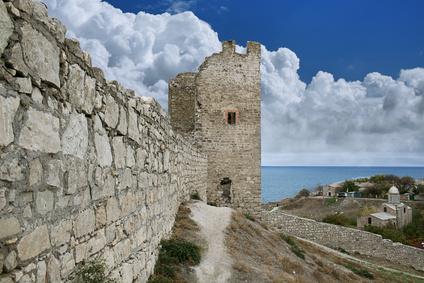 Populated by the mysterious Scythians, settled by the Greeks, taken over by the Roman Empire, overrun by the Goths, the Huns, the Khazars, expanded into by the first tzar of Kievan Rus, lost to the Byzantines, swept through by the Mongols, used as an economic muscle by the Genoese, blossomed by the Tatars, fortified by the Turks, annexed by the Russians and finally given as a present to the Ukraine. How many more places can boast such a motley 2500 years of history?
Populated by the mysterious Scythians, settled by the Greeks, taken over by the Roman Empire, overrun by the Goths, the Huns, the Khazars, expanded into by the first tzar of Kievan Rus, lost to the Byzantines, swept through by the Mongols, used as an economic muscle by the Genoese, blossomed by the Tatars, fortified by the Turks, annexed by the Russians and finally given as a present to the Ukraine. How many more places can boast such a motley 2500 years of history?
As a consequence, Crimea is anything but short on things to see. The main legacy here is that of the Tatars, the Turks and the Russians. The splendour of the Bakchisarai Palace – the seat of medieval Tatar Khans – and the Sudak Fortress – a complex of Turkish fortifications winding around the mountains at head-spinning heights – are just some of the Near Eastern jewels that mix with the summer residences of Russian monarchs or writers (e.g. Chekhov) and Orthodox monasteries, including an ultra-weird Uspensky monasterial complex of caves.
Add to it some solid history. It was here the Florence Nightingale became known, and it was here, at the town of Balaklava that the name for the head-gear was invented. It was here that the White Army had their last day under Wrangel before the Red Army won. It was here, in Yalta, that Stalin, Roosevelt and Churchill shared the spoils. Not to mention that Crimea for the Slavs is the same as Africa is for mankind – it is the cradle of Eastern European kin, the primordial mother of all.
And after all this action-packed turbulence and ethnic mix, Crimea remains a demographically tormented place. Ninety percent of population here is Russian, yet they have to learn Ukrainian and abide by Ukrainian laws. Technically, as any local will tell you, Crimea had never been a part of Ukraine. It was taken by the Russians from the Tatars in 1790s, way after Ukraine itself seized to exist. What happened is that Kruschev gave it as a gift to Ukraine to celebrate 300 years of unity. After the collapse of the Soviet Union the perplexed Russians suddenly found themselves in an independent Ukraine. In addition, the indigenous Tatar population, displaced in 1940s by Stalin for collaboration with the Nazis, have made a strong move to turn Crimea into an autonomous Tatar republic, although the violent clash of the 90s is now just a memory.
The ghost of the Soviet era is also still on the streets. Deactivated T-34 tanks remain on the squares as monuments to the valiant battles of the WW2. An occasional bust of a Soviet leader still smiles at you, and the old generation still remembers the good old days over a vodka.
And although yes, life is not easy and yes, there is an occasional friction here and there, Crimea is by far one of the most peaceful, tranquil and relaxed places in the former USSR. Whatever the ethnic group, people here know the most important part – they are Crimeans. They savour life much like the Spanish, and for the same reason.
The thing is Crimea is gorgeous, stunning, beautiful, simply lush. It is just over the sea from Turkey. The mellow sub-tropical climate gives you anything you may desire – lots of sun, high temperatures without making it a struggle, perfect beach time, warm sea water. You should see the fruit markets in Crimea – it will remind you of any arid Mediterranean or Near-Eastern riches. No wonder that Crimea has 200 years history of sea-resort tourism. It has always been the place to go for the Russian monarchs and Communist Party leaders – the biggest chill-out jewel in their whole realm. Crimean coast is one long string of beaches, resorts, beaches and resorts. Crimea for the Russians and Ukrainians is what the Canarias are for the Brits or Bahamas for the Americans.
It was curious to see the beach town people in Crimea. They share the same traits all over the world: a simple love of life, a taste for pleasure, a warm blood, a playfulness. It was just odd to see that those places also exist in a nation known for anything but.
The nature here stuns in every single direction, horizontal or vertical. Not only you can enjoy the coast and the valleys, but there are also incredible mountain hikes and numerous caves with a wonderland beauty at up to 1 km deep. There is just as much for a nature lover or an adventurer, than for a culture or history buff.
All this stuff is incredibly compact. To cross the entire peninsula will take only a few hours. Travel is cheap, easy and frequent – buses, trolley buses, trains. The main hub is the capital Simferopol – not an incredibly vibrant city but nevertheless a fairly pleasant place to stay, with the characteristic Crimean mellow sunny afternoon vibe on the streets. Most of the places you will want to go to are an hour or two from here.
There are no safety issues here. Normal precautions apply. All the stereotypes about rampaging gangs turned out to be from another world far, far from Crimea. The only thing you could find difficult is the language, since reading in cyrilic doesn’t help much either. Quite a few people know basic English though and foreigners normally cause a lively interest.
Crimea is an odd and wonderful place. It is so multi-dimensional, it really should be a country of its own. So small yet so rich, you could spend quite a lot of time there without running out of things to do and to see. Considering the Ukranian visa regime (much less of an international incident than getting a visa in a Russian embassy) and the lushness of Crimean climate and nature, it is probably one of the easiest, most comfortable and colourful places to start for those who are interested in Russia / Ukraine.

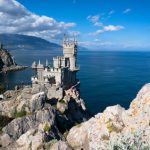
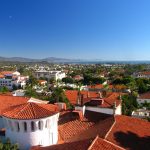
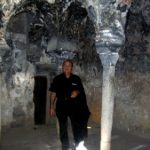
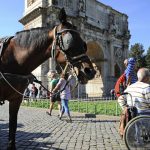
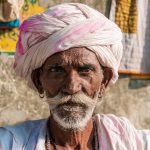

Leave a Reply